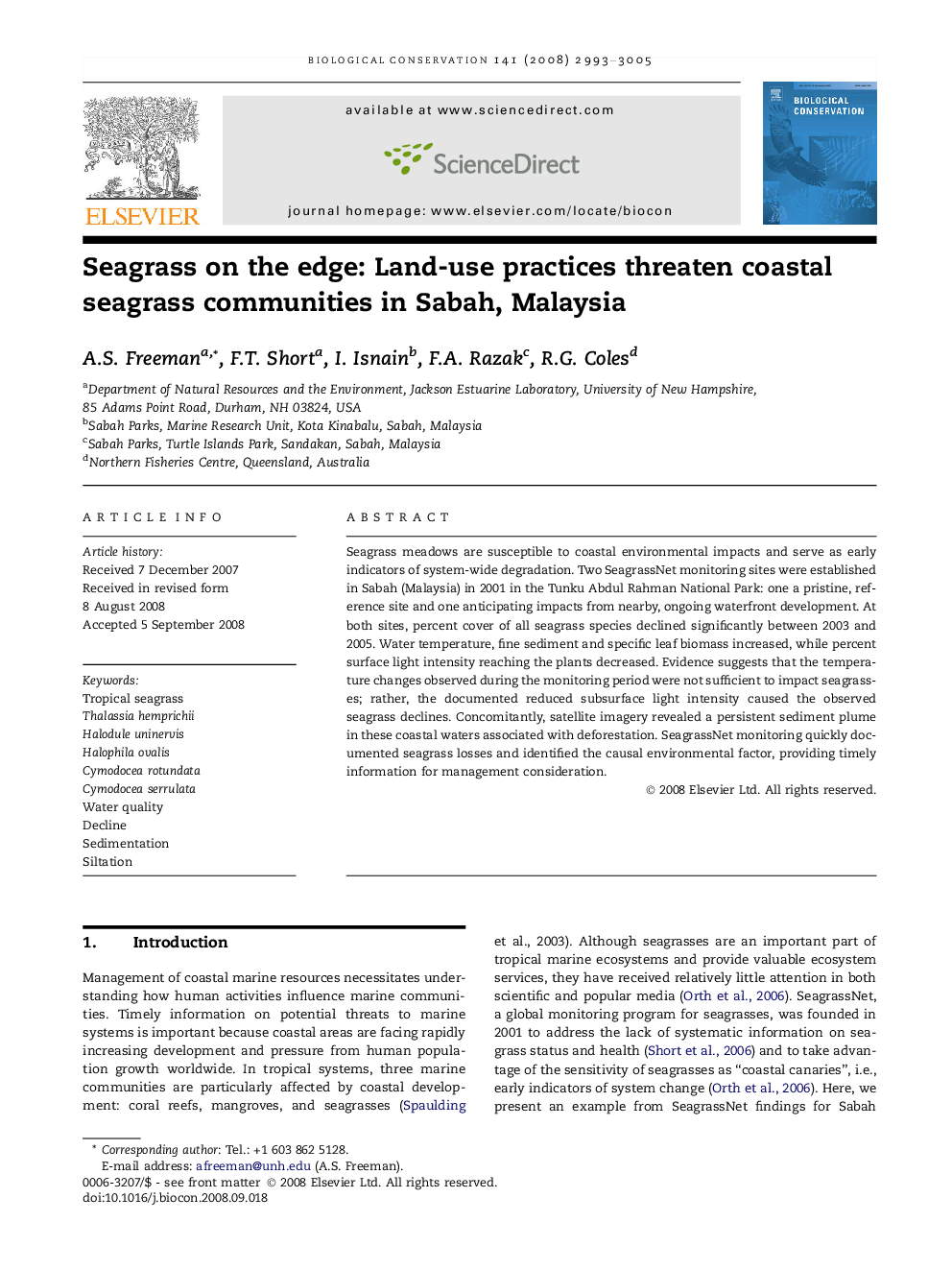| Article ID | Journal | Published Year | Pages | File Type |
|---|---|---|---|---|
| 4386608 | Biological Conservation | 2008 | 13 Pages |
Abstract
Seagrass meadows are susceptible to coastal environmental impacts and serve as early indicators of system-wide degradation. Two SeagrassNet monitoring sites were established in Sabah (Malaysia) in 2001 in the Tunku Abdul Rahman National Park: one a pristine, reference site and one anticipating impacts from nearby, ongoing waterfront development. At both sites, percent cover of all seagrass species declined significantly between 2003 and 2005. Water temperature, fine sediment and specific leaf biomass increased, while percent surface light intensity reaching the plants decreased. Evidence suggests that the temperature changes observed during the monitoring period were not sufficient to impact seagrasses; rather, the documented reduced subsurface light intensity caused the observed seagrass declines. Concomitantly, satellite imagery revealed a persistent sediment plume in these coastal waters associated with deforestation. SeagrassNet monitoring quickly documented seagrass losses and identified the causal environmental factor, providing timely information for management consideration.
Keywords
Related Topics
Life Sciences
Agricultural and Biological Sciences
Ecology, Evolution, Behavior and Systematics
Authors
A.S. Freeman, F.T. Short, I. Isnain, F.A. Razak, R.G. Coles,
